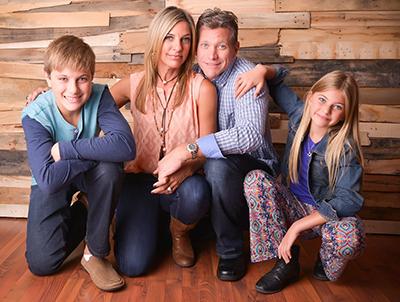
After Liviya’s diagnosis of severe aplastic anemia, my wife Rebekah and I wanted to contribute to bringing awareness to this potentially fatal disease, doing things that can help find a cure. First, we set up an ongoing annual blood drive now in its sixth year that is facilitated by the American Red Cross.
Apart from what happened to Liviya, I had a particular motivation to become as involved as I could be. I’m connected to the biomedical research field as part of the lab animal industry -- I assist in the design and planning of biomedical research facilities. It occurred to my wife and I that this research creates discoveries that truly saves lives -- not only human lives, but lives of other animals. Liviya, like many little girls, always loved horses, and the anti-thymocyte globulin (ATG) that was used to treat her is made from horses which in part, saved her life.
I wanted to bring this more into the public view and also show those in our field what this work really accomplishes. The Foundation for Biomedical Research reached out to us about telling our story. Liviya was featured in a cover story of their publication, Research Saves magazine.
After that, they asked us if we would be the focus of a 25-minute video that’s part of a broader video series called ‘Bench to Bedside”, focusing on how animal research has helped find treatments and even cures for humans and animals. Our segment features our family, and also includes
Liviya’s doctor at UNC Chapel Hill, researchers at the National Institutes of Health, and Liviya’s teacher at school.
Our segment of “Bench to Bedside’ follows the timeline including her illness, diagnosis, and subsequent treatment and unexpectedly rapid recovery, And it also shows what we’ve been doing as a family to call attention to this disease and support ongoing research. This research is especially important for patients like Liviya, who don’t have a sibling bone marrow match.
This video, Liviya’s Story, was nominated for two Emmy awards. We attended the event and although we didn’t win, we think it was well-produced and really carries the message we want to communicate. We’ve also been featured on multiple local TV in spots about blood donation and our own fundraising efforts. Even Nickelodeon TV called us to be in short feature called ‘Nick News’ for kids about animal research. Although my wife is involved in the video productions we have been part of, she prefers to leave the spotlight to Liviya.
We just finished another video about aplastic anemia – it was seen in Australia and New Zealand, and soon after in other parts of the world.
Apart from what my family has been involved in, I’m doing things on my own. I have done over 40 speaking engagements – mostly recently in Paris. The trade organization I’m a member of, AALAS (American Association of Lab Animal Science), like all similar organizations, has an annual conference. Part of the program is where exceptional high school and college biology students attend presentations and learn about the industry, and they also visit the exhibit hall to really see everything that goes on in the field.
At my company’s National Sales Meeting in 2016 a video was produced showing the Liviya’s story. She and my son both joined me onstage and shared their experience with our family’s journey of searching for a cure, which was a truly emotional moment for me. For their ages, they both show amazing poise in front of so many strangers.
At this point, we thought maybe all of this media attention and participation in industry events was enough, and we should let others take over and just return to our regular family lives. We asked our kids about this, and they both said “We can’t stop now – there’s no cure!” This shows how she –and we – all feel about this. So we’ll continue to be part of the push to promote awareness about aplastic anemia .Wherever we can help – public awareness, interaction with the research community – it’s all time well spent.
We know that Liviya’s aplastic anemia can come back at any time – there is a 50/50 chance. So for her and the many others, our work is not yet done.
Through our fundraising efforts we issued a research grant a few years back to a researcher, Dr. Katherine King, looking at why stem cells die in aplastic anemia patients. Dr. King recently published her findings in Cell Reports and Baylor College of Medicine’s web page. As of today, we are very close to funding our second 2-year grant for research.
Together we will find the cures!!
